By Dan Weisz
Actually, the Peregrine probably never left our Foothills neighborhood. Summer arrived and its hunting time at daybreak no longer matched my getting-out-of-bed and heading-out-the-door time. I am certain that this Falcon and its mate roost on a cliff or rock face somewhere in either Finger Rock or Pontatoc Canyon north of my neighborhood. They use the telephone poles along Skyline Drive to hunt from. The poles are the “tallest trees” around. One morning last week I was up early to meet a friend and noticed this handsome bird as I drove down the road at 6:20 AM.
I notice two interesting things about this Peregrine. First, you can see that its crop is bulging. The crop is an enlarged, muscular pouch in the throat of this bird, part of its esophagus. The crop is used to temporarily store food. Essentially, the crop is this bird’s “doggie bag”. Its stomach is full with the morning prey and the crop is a place to store extra food until there is room in the stomach. Looking at the surface of the telephone pole, you can also see a small tidbit of red meat, leftovers from breakfast.
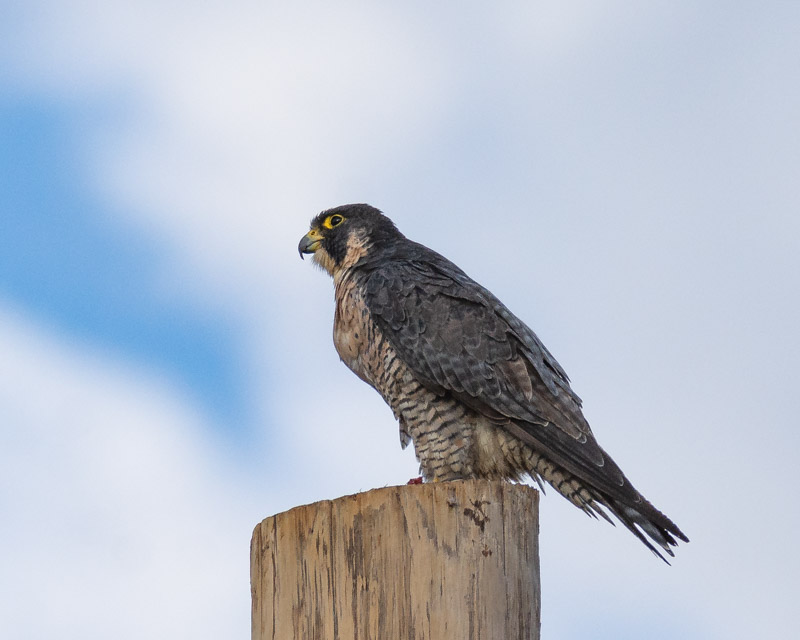
Birds spend very much time preening, cleaning and getting all of their wing and body feathers in place. Here the falcon is stretching its left wing/leg. The full crop is very apparent now.
By the way, the lighting from the east was behind me as I was looking at the bird and the scattered clouds were moving quickly behind it. In the photos, you will see a variety of cloud formations behind the bird.
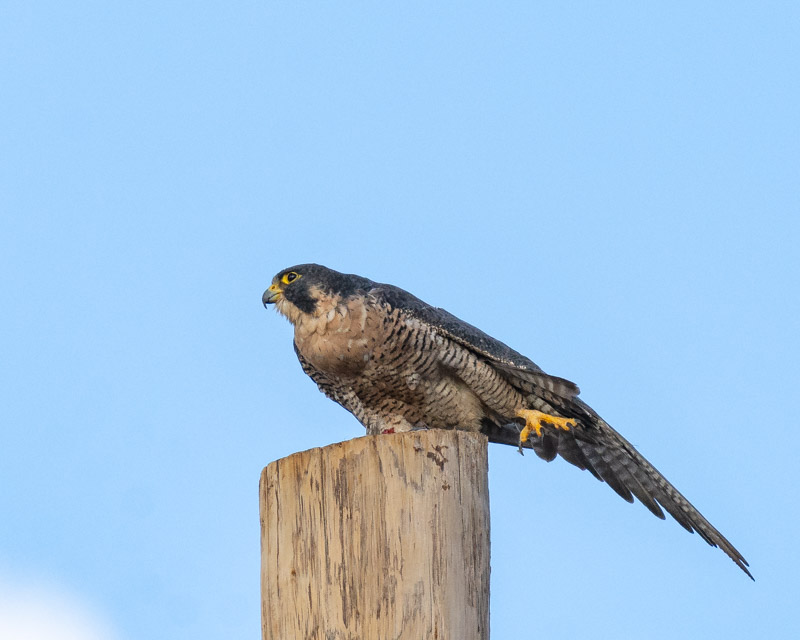
This next photo is begging for a caption. Peregrine Falcons have very long talons. Their talons are not as strong as other raptors’ are but they are effective hunting tools. Peregrine Falcons are bird hunters and can kill their prey by striking prey with a balled up foot at the end of a very fast flight, knocking it out. The long talons then are used to wrap around the body of the bird to be transported back to a perch for plucking and consumption.
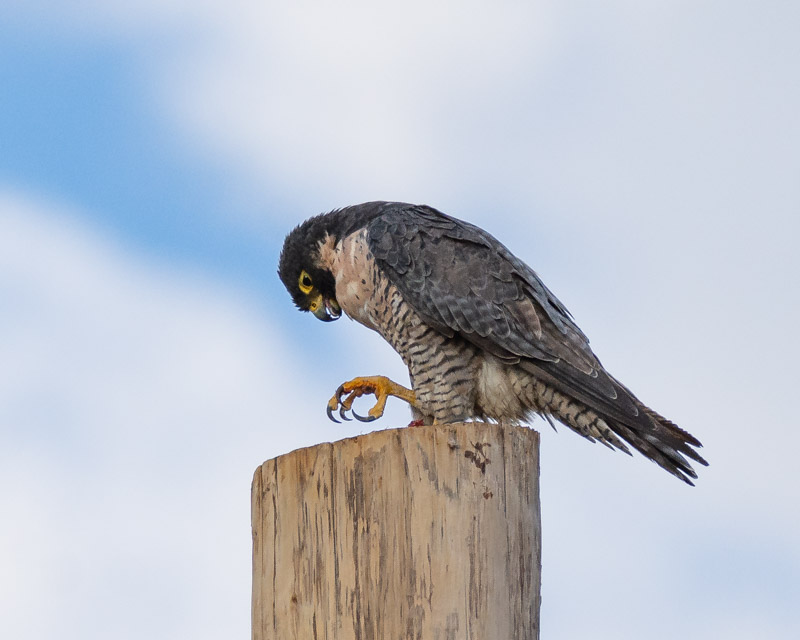
When a falcon stretches its wings over its head, that is called “warbling”, a term used for centuries by falconers. This behavior is part of its regular full-body stretching routine.
Can you see the little feather standing out at the elbow in front of of each of the bird’s wings? That is the bird’s thumb and is called the “alula”. In flight, this feather is used to assist in several ways. If you’ve ever ridden in an airplane and looked out the windows during take-off at the plane’s wings, you may have seen a movable part of the wing sticking up. That slat performs the same service at the Peregrine’s alula.
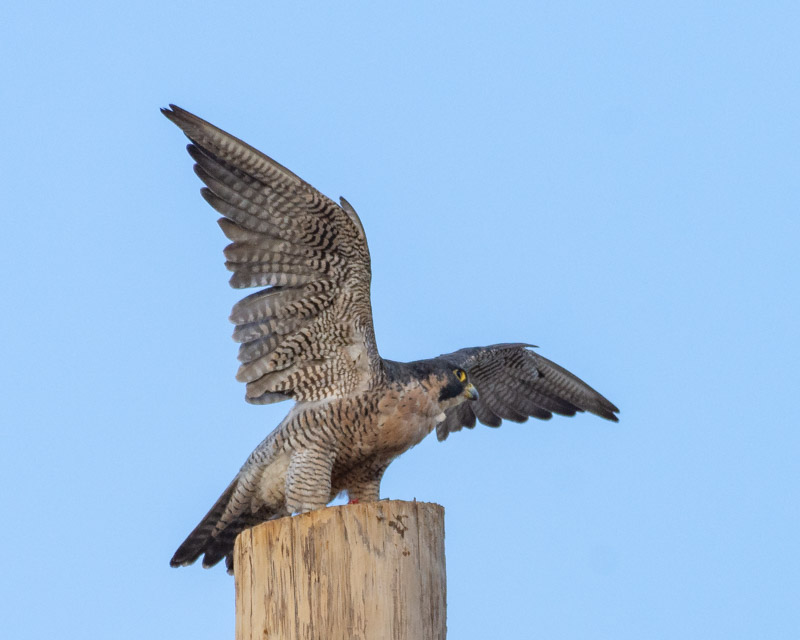
After much wing stretching, the bird performs a full body rouse. This part of grooming happens when the bird erects all of its feathers and then shakes them. It is a sign that the Falcon is relaxed and content. Peregrines may also rouse just before taking flight.
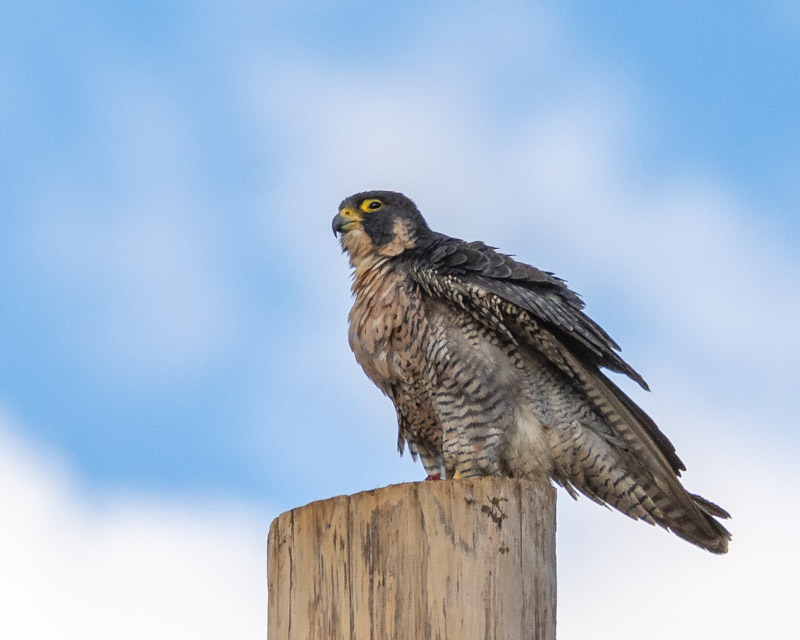
And here we have a Peregrine Falson at rest. Peregrines have dark backs and head, with an unmistakeable mustache or malar stripe (cheek patch). Their yellow eyes contrast sharply with that dark face. You can’t tell a male Peregrine from a female Peregrine unless they are side by side. Both males and females look alike. The females are much larger than the males. If I get the opportunity to see them side by side at some point, I’ll be able to tell which is which, but that won’t do me any good when they are alone.
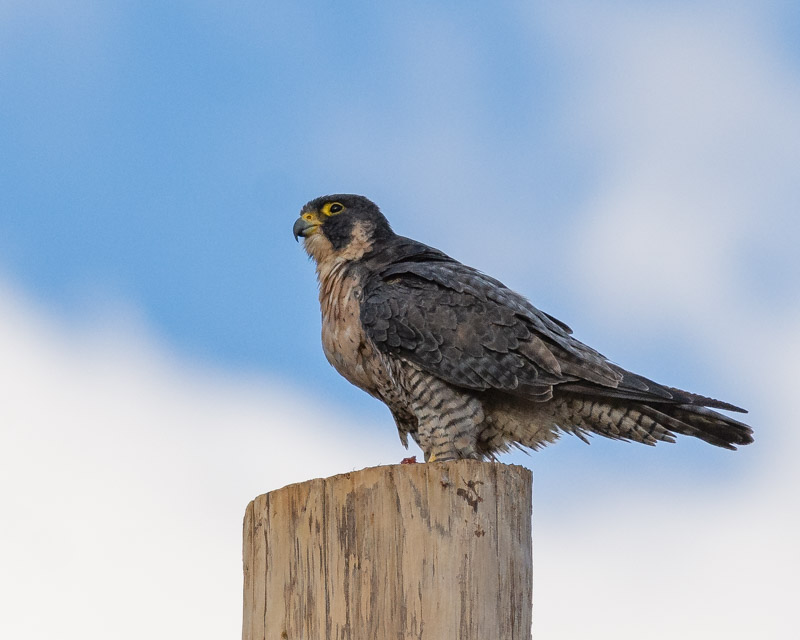
Here the bird is getting ready to fly by lightening its load. This kind of stuff happens when you are watching wildlife.
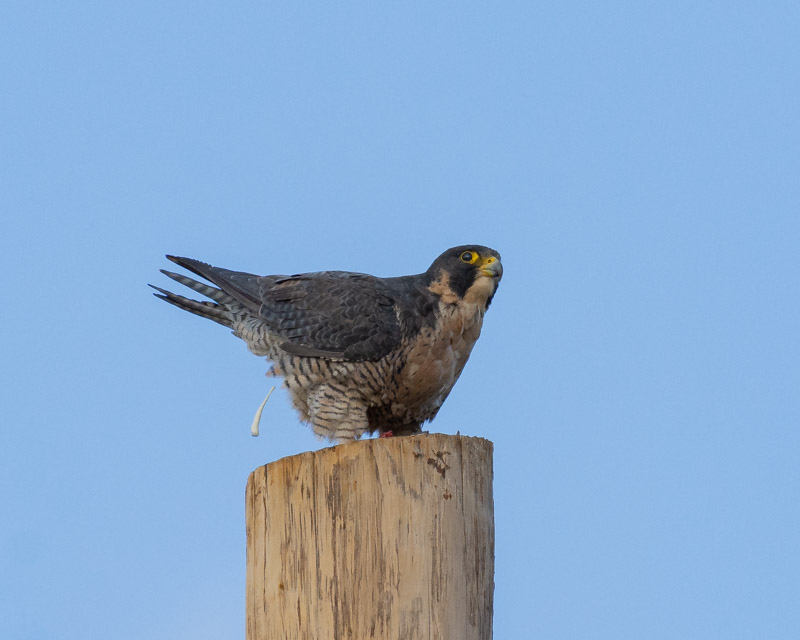
I am looking forward to seeing this bird often through this fall and winter.
Return to Foothills Clusters Home
